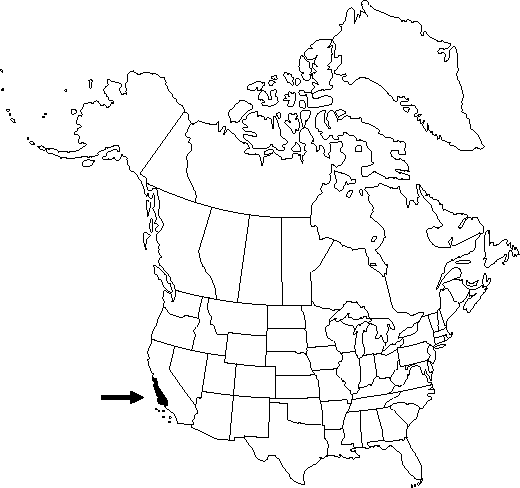Delphinium umbraculorum
Brittonia 8: 19. 1954.
Stems 40-70 (-90) cm; base often reddish, glabrous or puberulent. Leaves usually present on proximal 1/5 of stem at anthesis; basal leaves 0-3 at anthesis; cauline leaves 3-7 at anthesis; petiole 0.8-12 cm. Leaf-blade round to pentagonal, 1.5-4 × 2-6 cm, nearly glabrous; ultimate lobes 3-13, width 3-20 mm (basal), 1-8 mm (cauline). Inflorescences (5-) 10-25 (-45) -flowered, open, narrowly pyramidal; pedicel 0.5-3 (-7) cm, glabrous to puberulent; bracteoles 3-7 mm from flowers, green, linear, 3-6 mm, puberulent. Flowers: sepals dark blue, puberulent, lateral sepals spreading, 9-16 × 4-7 mm, spurs gently upcurved, ascending 30-45° above horizontal, 8-14 mm; lower petal blades elevated, exposing stamens, 3.5-6 mm, clefts 0.5-1.5 mm; hairs densest near junction of blade and claw above base of cleft, centered or on inner lobes, white. Fruits 9-16 (-19) mm, 2.5-3 (-4) times longer than wide, puberulent. Seeds: seed-coat cells brick-shaped, cell margins straight, surfaces smooth. 2n = 16.
Phenology: Flowering late spring–early summer.
Habitat: Slopes in oak forests
Elevation: 400-1600 m
Discussion
Delphinium umbraculorum is most often confused with D. patens subsp. hepaticoideum; refer to discussion of that taxon for distinguishing features. Hybrids occur with D. parryi and D. patens subsp. montanum.
Selected References
None.
Lower Taxa
"entire" is not a number."thin" is not a number.
